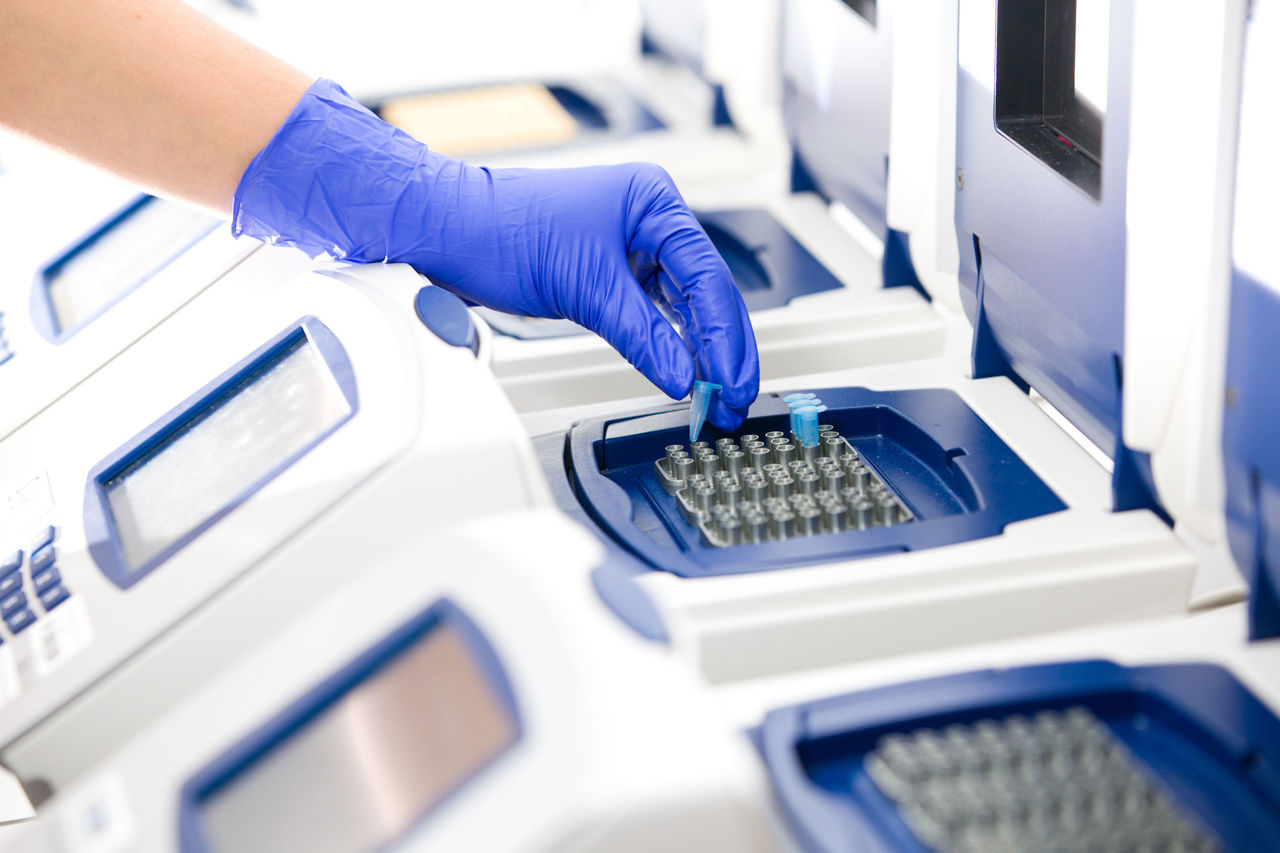Step two: Genetic test
A genetic test is an analysis of animal’s DNA used to investigate changes that cause or increase the likelihood of developing specific diseases, responses to therapy, physical characteristics, and the identity of the animal. DNA is a genetic record or code with instructions for functioning of an organism. When a biological sample of your animal (most commonly blood or swab) arrives in the laboratory the first step is DNA isolation. We have already written more about the process of DNA isolation previously (available here). In this article we will describe the process of the genetic test itself.
We use various laboratory techniques and high-throughput laboratory equipment to perform genetic tests. To be able to analyse changes in a DNA molecule, it is necessary to multiply the regions of interest to the limit of detection. Basic method for DNA amplification and genetic testing is the PCR method - polymerase chain reaction. The PCR method is used to amplify specific segments on DNA to enable the detection or measurement of changes in genes or regions. The DNA sample of your animal is used as a template for multiplication.
Analysis of the amplified DNA segments can be performed using various laboratory techniques selected according to the type of DNA change being investigated. The most used methods are DNA sequencing (determination of the nucleotide sequence of DNA), genotyping using real-time PCR and DNA analysis by gel electrophoresis. In all techniques, amplified segments of DNA are stained with different dyes to enable the detection of genetic changes by laboratory instruments.
In our laboratory, we use reference methods to examine or test one gene at a time. In most cases, a genetic test is used to analyse one change that is related to a specific genetic disease or trait. In some diseases or traits, multiple changes in the same gene or changes in multiple genes may be involved. In this case, it is necessary to perform several individual tests to analyse all changes that were related to the investigated genetic disease or trait and get the final result of the genetic test. An example of a genetic test that consists of several individual tests is the brown coat colour test, which includes 3 or in some breeds even 4 individual tests.
When performing genetic tests quality control is routinely performed to control the performance of individual steps of a genetic test. Appropriate control samples and negative controls are used to control the performance of a genetic tests and ensure that the result of the analysis is correct. In addition to daily quality control, international interlaboratory controls are also organized and enable laboratories to compare their results with the results of other laboratories and obtain a certificate for their participation (ISAG). Laboratories can also prove an appropriate quality management system with an ISO certificate, which they obtain based on an annual inspection by the relevant certification body.





